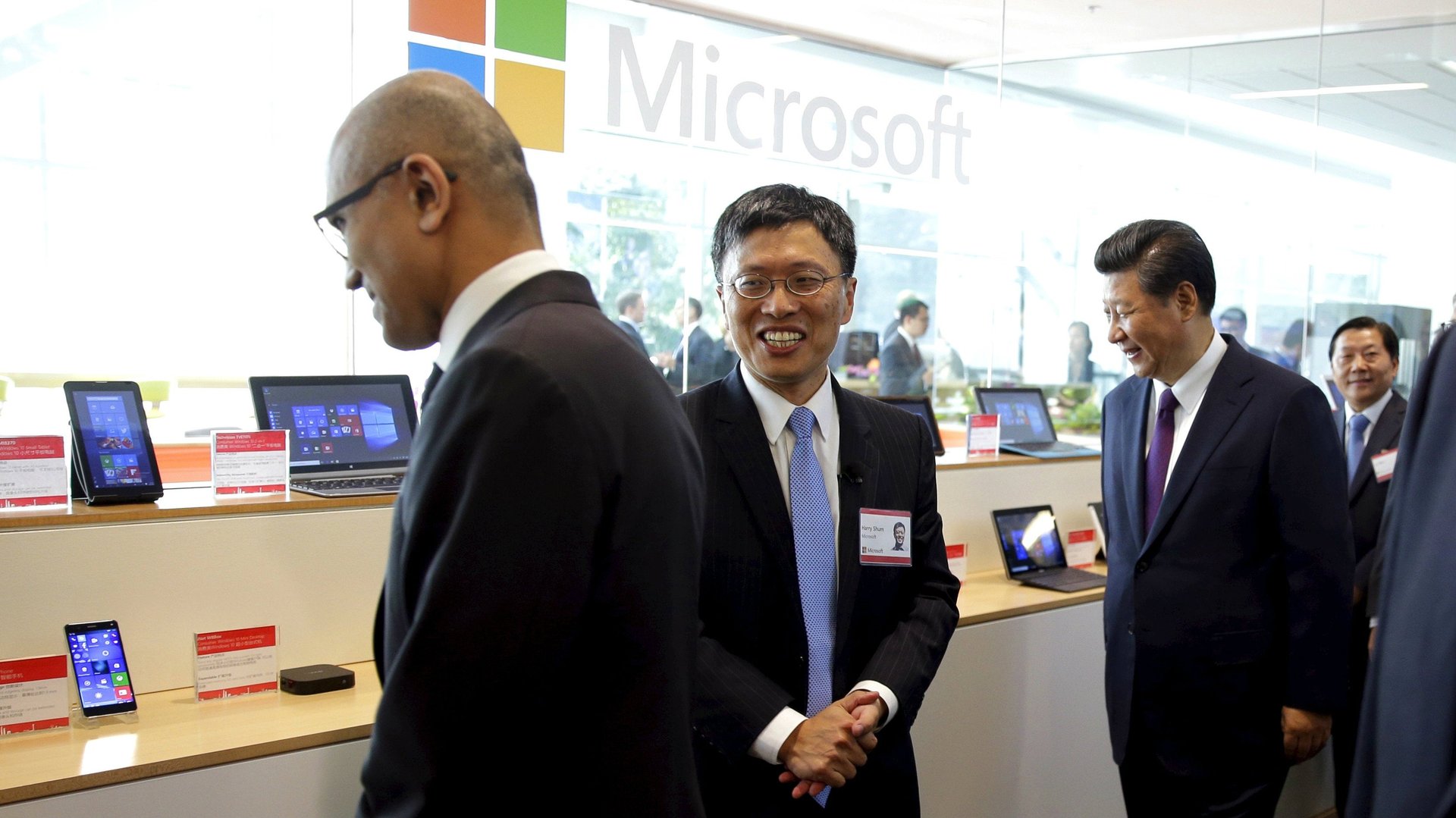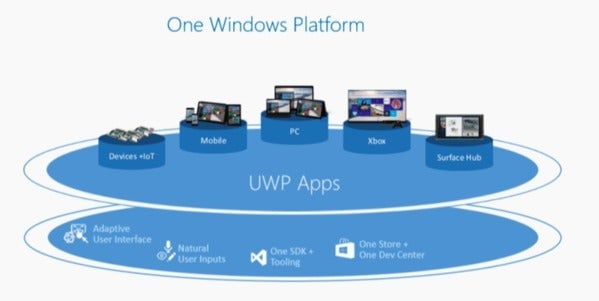Why Wall Street doesn’t care about Windows Phone
Today, a doomsday scenario: Apple execs resort to rash, countercultural moves to take iOS out of its tailspin. Read at your own risk.


Today, a doomsday scenario: Apple execs resort to rash, countercultural moves to take iOS out of its tailspin. Read at your own risk.
A frustrated Apple engineer (who shall remain nameless) slips me a copy of an internal memo that a senior exec has sent to the iOS team:
Subject: Drastic Measures
Because of failures in both marketing and engineering, the iOS platform is quickly losing market share to our competitors and has become a punching bag in the development community and among high tech journalists. This must stop. Correcting the situation means a near 360⁰ pivot. Effective immediately, you will be assigned to one of the following new projects:
New Xcode libraries that will allow the automatic porting of Androidand Windows Phone apps to iOS. (Despite rumors, we won’t port Blackberry apps to iOS. We are not necrophiliacs.)
Xcode will generate uApps. The tried and true Write Once, Run Anywherestrategy will let iOS developers, both the veteran flock and the newly converted acolytes, see their apps run on iPhones, iPads, and Macs.
We will replace Airplay and Continuity—they’re too abstract and confusing. We need something more concrete, a box with cables, a dock that connects an iPhone or iPad to a monitor, keyboard, and mouse. Our customers will rejoice as they return to their comfortable desktop workflow.
In addition to these technical projects, Apple will demonstrate our faith in our platform’s future by subsidizing app development. This will attract best-of-breed, truly business-oriented developers.
News of this fresh and exciting direction will be selectively leaked to developers this coming April 1st, giving them enough time to port and/or rewrite Universal Apps in time for marquee headlines at Apple’s Developer Conference in early June.
It’s a sad message that reeks of desperation, an attempt to fight the circling of the drain. It’s too little, too late.
And, of course, it’s a joke… but it’s not a complete fabrication. As you have no doubt realized, particularly if you followed the links, this is a fair summation (if unfair parody) of Microsoft’s spastic attempts to reverse the fall of its smartphone market share.
The first point: Tools to port iOS and Android apps to the Windows Phone platform. To whom is this attractive? Developers are already overworked with their day jobs: fixing bugs, adding features, fighting App Store gatekeepers, working hard to generate more revenue… on two very prosperous platforms. Even if we assume that porting an app to Windows Phone is effortless—and that’s a big assumption—why bother when IDC tells us that the platform’s market share was 1.6% in Q3 2015? (Other estimates run as high as 2.2%!)
To avoid hearing the answer to that question, Microsoft is willing to pay developers to build Windows Phone apps. The scheme, which was started in 2008… and then stopped… and then restarted in 2013, has failed to move the needle (twice).
Next, let’s turn to the old refrain: Write Once, Run Anywhere, a.k.a. universal apps:

There are well-understood reasons why this slam-dunk idea has never paid off in practice. At one end of the spectrum, we have lowest common denominator mediocrity: Compromises must be made to ensure that a single Write Once code base will work on the smallest, least powerful Run Anywhere device. Imagine music that’s written so that it can be played, without rearrangement, on a flute or by an orchestra. You’re not going to hear many orchestral performances.
To solve the problem, we can go to the other end of the spectrum and devise modules that are tailored for each supported device and bundled inside a universal app. When an app is launched, it determines which device it’s running on and activates the appropriate module.
Again, it’s a nice idea in theory, but if we look at the universal device family depicted above, it means bundling code modules that will serve everything from desktops to mobile computers to Xbox game consoles to IoT (Internet of Things) products, some with an explicit user interface and some “headless”… you get the idea.
Microsoft contends that its software tools help developers manage these complicated and sometimes contradictory requirements, but the resulting apps invariably suffer from multiple ailments: bloat, sub-optimization, increasingly obscure bugs. Leaving IoT devices aside, would a sane developer want to write, debug, and maintain a game that can run on Windows laptops, phones (which use a different processor family), and Xbox consoles?
To Be Sure™, one or two isolated examples could be conjured up and trotted around as proof that universal apps are possible, but target-optimized apps will continue to win, as they always have in the past.
It appears that I’m not alone in this judgment. As I was writing this Monday Note, Steve Ballmer opened his mouth at Microsoft’s annual shareholders meeting (via Bloomberg and Fortune; edits and emphasis mine):
Microsoft CEO Satya Nadella] said that a core part of his company’s strategy is to make it easier for developers to create universal apps that could run across all Windows versions, including those on PCs, smartphones, and tablets.
Ballmer […] couldn’t stay quiet during Nadella’s response. As his successor was speaking, Ballmer was heard saying that Nadella’s plan “won’t work,” adding that the secret to getting Windows smartphones running more programs is to let them “run Android apps.”
For good measure, Ballmer, Microsoft’s largest individual shareholder (he now owns more shares than Bill Gates), criticized the company’s decision to share a run rate for its cloud business rather than actual revenue: “It’s bulls–t.”
Considering Ballmer’s history of miscalculated hot takes (iPhone: No way!; iPad: just a PC minus keyboard and mouse; MacBooks: Apple logo slapped on an Intel laptop), I’m chagrined that I agree with him: universal apps won’t work; Android is now the way to go (a suggestion I made to Nokia’s management in June 2010, along with the suggestion that they fire their CEO, Olli-Pekka Kallasvuo).
According to Fortune, Ballmer had “brought up his concerns with Microsoft,” which we’ll take to mean Nadella and the Board. “Thank you for sharing your views” appears to have been Microsoft’s response to the company’s former CEO, an undoubtedly energetic leader, but one who might have left the company a couple of years past his sell-by date.
(To dispel any lingering doubts: Ballmer’s peevish behavior makes it clear that he didn’t leave Microsoft on his own. Instead of feeling liberated and grateful, he tries to settle scores, as if Nadella betrayed him in a palace coup. Ballmer might be right about cloud revenue reporting and Windows Phone strategy, but his public outbursts won’t help the company or the value of his shares. Nor can he dream of another Steve and hope to return to the helm. Ballmer’s departure in 2014 was dignified; he should have left us with that memory.)
Returning to our fantasy, if Apple were to pursue the “drastic measures” described above, it would be seen as the end. The noise would be deafening and the stock market would run from AAPL shares.

Why can’t Wall Street see that universal apps, porting tools, and bribing developers won’t save the Windows Phone platform?
The answer is simple: Wall Street doesn’t care about Windows Phone, neither its success nor its failure. The collective belief is that Microsoft will come to its senses, realize that they have no expertise in the smartphone market, and return to what they do best: making money by creating software.
That expectation is the only thing that keeps Microsoft’s stock price afloat.
This post originally appeared at Monday Note.